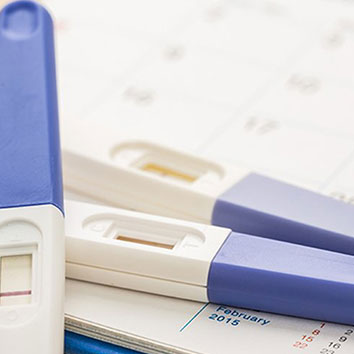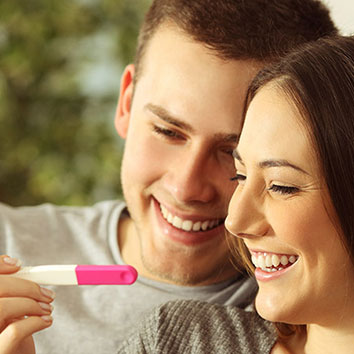Listen to your body and you may be amazed at what it is telling you.
Ovulation symptoms can be subtle but often quite noticeable once you know what to look for. They involve your body's normal response to the natural changes in hormones that occur at different stages of the ovulation cycle. These symptoms often precede ovulation by 4–5 days and give you hints about your most fertile period.
*Remember*
Birth control pills, implants, injections, or anything that uses synthetic hormones, will suppress normal ovulation symptoms and other indications of the different stages in your menstrual cycle.
Here are the common symptoms of ovulation:
1. Increased libido
- Increase in oestrogen, testosterone, and luteinizing hormones in the lead-up can trigger higher-than-usual levels of sexual desire.
- Increased libido is good news, because you’re more likely to have sex often in the four to five days leading up to ovulation.
- Women have said they look sexually more attractive in the lead-up to ovulation; the side-effects of oestrogen include inhibition of oil production in the skin, which reduces the incidence of pimples, could be a contributing factor.
2. Change in cervical mucus
- The change in cervical mucus that occurs just prior to ovulation is one of the most consistent and reliable of all ovulation symptoms in most women.
- The volume of cervical mucus starts to increase as ovulation draws closer. Shortly after menstruation, cervical mucus may be sparse, but it will slowly increase in volume as the days progress. At first, it could have a slightly sticky consistency and be white or cloudy in colour.
- In the days just before ovulation, the rise in oestrogen causes more cervical mucus to be produced. The mucus at this time is usually fairly clear and the texture becomes more slippery and stretchy—it is often compared to raw egg-white.
- This cervical mucus is designed to allow sperm to move freely through the cervix and into the fallopian tubes, and to enable its survival until the release of the egg.
3. Change in the position and firmness of the cervix
- For this you need to be familiar with the usual “feel” of your cervix.
- Proponents of this method suggest that you check your cervix once a day at around the same time. The cervix is usually smooth and round and slightly firmer than the vagina. It is found at the top of the vagina. It is best checked with one or two clean fingers, while in a squatting position.
- As ovulation approaches, the cervix goes higher and is more difficult to reach, and generally feels softer and more open.
- Many women aren’t comfortable with assessing the state of their own cervix, so this is not a commonly assessed ovulation symptom.
4. Tender breasts
- Only some women experience this symptom, which is thought to be a side-effect of high oestrogen levels. Women who experience breast tenderness will usually find it occurring in a similar way each month.
- The effects of the oestrogen diminish significantly after ovulation. However, they may recur in the lead-up to menstruation.
- If you suffer from breast tenderness mid-cycle, it’s worth taking note of this as an ovulation symptom. When it occurs and to what extent, can be used in conjunction with other symptoms to find fertile days.
5. Heightened senses of smell and taste
- Some women report a more intense experience of smells and tastes at the time of ovulation.
- This symptom is associated with raised levels of oestrogen.
- When the egg has been released at the time of ovulation and oestrogen levels drop, this symptom generally fades.
6. Abdominal cramps (Mittelschmerz)
- An estimated 20% of women feel a mild cramp-like abdominal pain or twinge at the time of ovulation.
- This ovulation symptom has the clinical name of Mittelschmerz, which is German for “middle pain”.
- The pain can last from a few minutes to a few hours and is more common in the right side of the lower abdomen, although some women report pain on both sides, while others report that the pain moves from side to side each month.
- Possible explanations of Mittelschmerz include:
- Growth of follicles in the ovaries prior to ovulation
- Rupture of the ovarian wall that occurs each month at ovulation
- Muscular contractions of the fallopian tube and the ovaries that occur after ovulation
7. Rise in basal body temperature
- Immediately after ovulation, a rise in the body's level of progesterone generates this almost universal ovulation symptom.
- At this time, most women will experience a rise in their resting body temperature of around 0.5 degrees Celsius, and their temperature will remain at that level for the rest of the month.
Basal body temperature is best measured first thing in the morning, before you get out of bed, using












